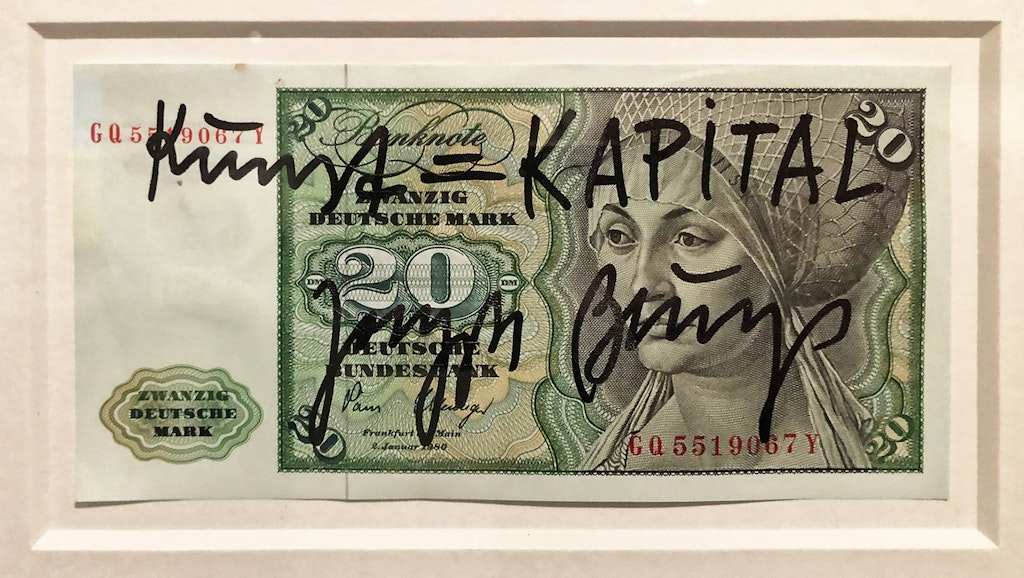Artists shaped by war
Practically all the artists in the book are traumatised in one way or another, and all experienced war
This article was taken from the September issue of The Critic. To get the full magazine why not subscribe? Right now we’re offering three issue for just £5.
Nowadays it seems we cannot get enough of early and mid- twentieth-century artists: biographies, illustrated books and exhibitions come thick and fast and the current interest shows no signs of abating. In response to perceived demand Christopher Neve’s book Unquiet Landscape: Places and Ideas in 20th-Century British Paintings has just been reissued in a new edition.
From the mid-1960s Neve was the arts editor at Country Life magazine, a job he did not find too onerous. When he could he slipped out of the office to visit artists he admired. If they had died he would talk to those who knew them. These direct sources are obviously not available to many contemporary biographers and art historians. Having noted conversations and read diaries and letters, he eventually decided to compile his findings into a kind of book, published in 1990, that as far as he knew nobody, except sometimes artists, had attempted before. The result is neither a piece of art history nor a critical appraisal of the artists’ output. Indeed, he fulminates that “critics are vandals and that pictures have their own meaning that will not accept words”.

What was the ambition of this distinguished biographer, an artist himself, as he set out to write about painting in this way? “The Landscape as Emotion” is his answer. “Landscape by itself is meaningless,” he writes, “but it works on our feelings in profound ways in relation to the outside world.” Neve sets out to analyse painters’ responses to landscape and how it reflects their world view. He quotes Proust: “Reality lies not in the appearance of the subject but in the extent to which it leaves an impression on the subject.”
The cover — Paul Nash’s painting Landscape: The Vernal Equinox, 1944 — might lead one at first glance to believe the book is about painters who specialised in the English countryside and nature, such as Eric Ravilious, John Nash, Ivon Hitchens and John Piper. All except for some reason Piper, an extremely popular artist at the time, are indeed included but Neve extends the interpretation of landscape, and the book is far more interesting for it.
He chooses painters who did not necessarily see themselves as painters of rural England, such as Stanley Spencer, Walter Sickert, David Bomberg and L.S. Lowry. Spencer was adamant he was not a landscape painter: he saw his home village of Cookham as backdrop to his religious scenes. He hated leaving the village: it gave him strength and grounding; his Christ preached at Cookham. Although Sickert did paint landscapes Neve concentrates on his work in Camden Town and Bath, where figures, often at the margins of the society, are the main focus. For Neve the townscapes are a psychological extension of these portraits. Virginia Woolf called Sickert a latter-day Charles Dickens.
He chooses painters who did not necessarily see themselves as painters of rural England
Practically all the artists in the book are traumatised in one way or another. Lowry’s mother wanted a girl and she would call him with disdain “a clumsy boy”. Both Graham Sutherland’s and John Nash’s children died young. Edward Burra was a sickly child who was ill with rheumatoid arthritis and a blood disease all his life. The underlying event shared by all of them is war. Paul and John Nash, Spencer and David Jones fought in World War One. Ravilious, Bomberg and Paul Nash were war artists in World War Two. Displacement, fear of death and a longing to find a genius loci are common to many artists.
Sheila Fell was drawn back to the coast of Cumbria, from where she was desperate to escape in her youth. Joan Eardley from Sussex was attracted to the coastal village of Catterline in the north of Scotland. Neve quotes Kierkegaard — “Dread is a desire for what one fears” — when describing her wish to paint the frightening and powerful sea in winter.
Unquiet Landscape is a fascinating, considered and evocative work and should be read slowly for full appreciation. It is refreshing that the author does not try to lump artists into groups and movements. What I cannot tell, however, is the difference between what artists had told him and his speculation about their inspiration, motives and ideas.
In the introduction, he teases us with snippets of reported conversation with Ben Nicholson about jazz and Alan Reynolds about Debussy. Winifred Nicholson’s topic is rainbows, William Townsend’s geometry. Direct quotes or attributed remarks are deliberately not included. I wonder what the artists themselves thought of his findings and interpretations.
Enjoying The Critic online? It's even better in print
Try five issues of Britain’s most civilised magazine for £10
Subscribe














